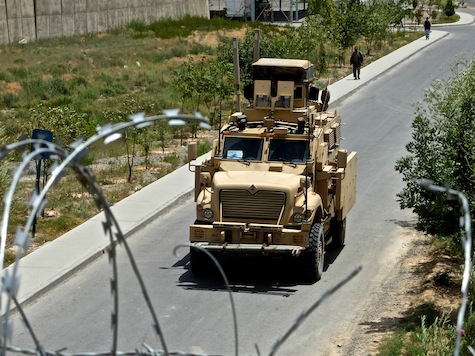Sobering new details have emerged about a recent Taliban assault on a sensitive US facility at the Kabul air base.
Fighting erupted in the pre-dawn hours of July 17th, after heavily armed insurgents penetrated the airfield’s outer defenses to strike at Forward Operational Base (FOB) Oqab, the headquarters of the US Air Force’s 438th Air Expeditionary Wing. As the attack spiraled, eyewitnesses on the scene reported, weapons fire spilled over into neighborhoods along the Qasaba Road, shut down military and civilian air traffic into Kabul, and diverted US and international flights to Bagram, and as far away as Mazar-i-Sharif.
The attack on Afghan Air Force positions and FOB Oqab escalated dangerously for almost five and half hours, subjecting the American base in a coordinated assault by suicide bombers, vehicle borne explosives, rocket propelled grenades and heavy machine guns. More than twenty RPGs were fired at defensive positions, and withering automatic fire raked the surrounding area.
According to eyewitnesses, the assault was characterized as “the longest sustained firefight against a USAF Forward Operating Base (FOB) in 50 years.” A week after the attack, Lieutenant Jessica Colby, a spokesperson for the 438th AEW, confirmed details of the battle, and stated that the forty-four U.S. defenders who beat back the Taliban assault were being nominated for an award for extraordinary heroism in action.
At the height of the battle, U.S. Air Force defenders launched two Quick Reaction Forces and maneuvered outside the FOB in order to assist Afghan security forces in preventing the team of armed insurgents from causing further destruction in an adjoining compound. Operating together, without a translator present, US and Afghan defenders maneuvered to establish interlocking fields of fire that eventually drove the attackers back.
During the engagement, the American defenders expended more than 3,000 rounds of M-4, M-203, and M-240 ammunition. Four insurgents were killed, two of them in fierce close quarters fighting. Much of the attack took place in proximity to the offices of the Commanding Officer of the 438th Air Expeditionary Wing, who was present during the attack along with his small, resident senior staff. Though the area around the headquarters and the defensive positions were struck repeatedly, there were no American or Afghan National Security Force casualties– a credit to the professionalism and skill of the defending forces.
In an email sent to journalists, the Afghan Taliban took credit for the assault.
A spokesman for the Afghan Ministry of Defense claimed that, “foreign intelligence services” were behind the recent string of attacks, noting that the Afghan government has long implicated Pakistan as a facilitator of insurgent activities.
“Afghanistan is in a proxy war,” stated Afghan Ministry of Defense spokesperson Zahir Azimi. “Foreign intelligence circles are working to endanger our air force in the long run.” Several US based defense analysts believe that the Pakistani Inter Services Intelligence (ISI) has been providing targeting data and operational support to the Taliban.
Over the past two and half weeks, the fighting season has resulted in four attacks on the Kabul International airport complex, resulting in damage to Afghan Air Force aircraft and facilities. Despite Taliban targeting, 438th Air Expeditionary Wing’s advisors continue to assist Afghan Air Force ground and aircrews to conduct air combat missions.

COMMENTS
Please let us know if you're having issues with commenting.